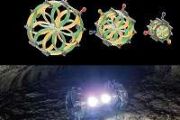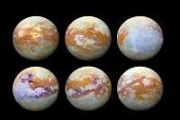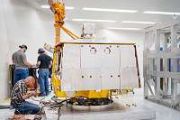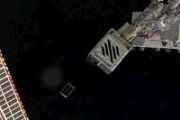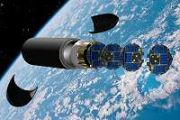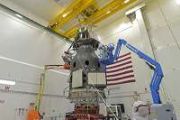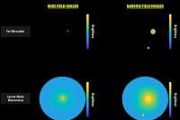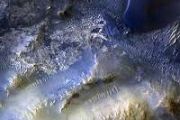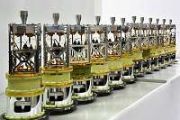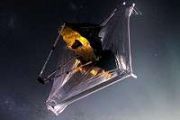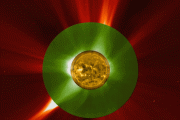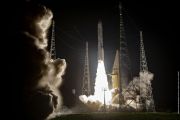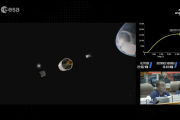
Copernical Team
KTSAT contracts with Satconsult to provide expert oversight of satellite construction
 Euroconsult has announced that its affiliate, Southern Aerospace and Telecom Consulting (Satconsult) has contracted with KTSAT to provide expert oversight throughout the build of Koreasat 6A satellite. The contract marks the third time that KTSAT will put its trust in Satconsult's depth of expertise to support the monitoring and control of the manufacturing process and advise on best practices f
Euroconsult has announced that its affiliate, Southern Aerospace and Telecom Consulting (Satconsult) has contracted with KTSAT to provide expert oversight throughout the build of Koreasat 6A satellite. The contract marks the third time that KTSAT will put its trust in Satconsult's depth of expertise to support the monitoring and control of the manufacturing process and advise on best practices f OneWeb and Arianespace signed an agreement following the suspension of the launches
 Following the suspension of OneWeb's launches in March 2022, OneWeb and Arianespace have reached an agreement pursuant to which performance of the Launch Services Agreement may be resumed in the future. The terms of the settlement are confidential.
Arianespace is supporting OneWeb on its upcoming launches; including the performance of Dispenser Supply Services for two launches to be perfor
Following the suspension of OneWeb's launches in March 2022, OneWeb and Arianespace have reached an agreement pursuant to which performance of the Launch Services Agreement may be resumed in the future. The terms of the settlement are confidential.
Arianespace is supporting OneWeb on its upcoming launches; including the performance of Dispenser Supply Services for two launches to be perfor Sidus Space and Momentus execute MOU to better serve customers
 Sidus Space, Inc. (NASDAQ:SIDU), a Space-as-a-Service satellite company focused on mission critical hardware manufacturing; multi-disciplinary engineering services; satellite design, production, launch planning, mission operations; and in-orbit support, has signed a memorandum of understanding ("MOU") with Momentus Inc.(NASDAQ: MNTS) to explore launching its LizzieSat satellites utilizing Moment
Sidus Space, Inc. (NASDAQ:SIDU), a Space-as-a-Service satellite company focused on mission critical hardware manufacturing; multi-disciplinary engineering services; satellite design, production, launch planning, mission operations; and in-orbit support, has signed a memorandum of understanding ("MOU") with Momentus Inc.(NASDAQ: MNTS) to explore launching its LizzieSat satellites utilizing Moment It's a planet: new evidence of baby planet in the making
 Astronomers agree that planets are born in protoplanetary disks - rings of dust and gas that surround young, newborn stars. While hundreds of these disks have been spotted throughout the universe, observations of actual planetary birth and formation have proved difficult within these environments.
Now, astronomers at the Center for Astrophysics | Harvard and Smithsonian have developed a ne
Astronomers agree that planets are born in protoplanetary disks - rings of dust and gas that surround young, newborn stars. While hundreds of these disks have been spotted throughout the universe, observations of actual planetary birth and formation have proved difficult within these environments.
Now, astronomers at the Center for Astrophysics | Harvard and Smithsonian have developed a ne Satellite mobility ecosystem provider, Morpheus Space raises $28M in Series A
 Morpheus Space, the leading provider of in-space mobility systems, has announced the close of a $28M Series A funding round led by space exclusive VC, Alpine Space Ventures. Alpine was joined by Morpheus Ventures, and existing investors - Vsquared Ventures, Lavrock Ventures, Airbus Ventures, In-Q-Tel, Pallas Ventures, and Techstars Ventures who returned from the company's Seed Round.
Morph
Morpheus Space, the leading provider of in-space mobility systems, has announced the close of a $28M Series A funding round led by space exclusive VC, Alpine Space Ventures. Alpine was joined by Morpheus Ventures, and existing investors - Vsquared Ventures, Lavrock Ventures, Airbus Ventures, In-Q-Tel, Pallas Ventures, and Techstars Ventures who returned from the company's Seed Round.
Morph Simulation aids the search for the origin of cosmic rays
 Cosmic rays seem to surround us everywhere. This is precisely what makes it difficult to find its sources. It would be helpful if we could trace their path through space. A new programme can help. An international research team has developed a computer programme that can simulate the transport of cosmic rays through space.
The researchers hope it will help them solve the mystery of the sou
Cosmic rays seem to surround us everywhere. This is precisely what makes it difficult to find its sources. It would be helpful if we could trace their path through space. A new programme can help. An international research team has developed a computer programme that can simulate the transport of cosmic rays through space.
The researchers hope it will help them solve the mystery of the sou Discovery Telescope plays key role in DART planetary defense test mission
 Within two weeks, the DART spacecraft will impact the asteroid moon Dimorphos as it completes the world's first planetary defense test mission. The success of the effort relies heavily on the Lowell Discovery Telescope, which scientists are using for both before- and after-impact observations.
The DART (Double Asteroid Redirection Test) mission is an outgrowth of ongoing interest in planet
Within two weeks, the DART spacecraft will impact the asteroid moon Dimorphos as it completes the world's first planetary defense test mission. The success of the effort relies heavily on the Lowell Discovery Telescope, which scientists are using for both before- and after-impact observations.
The DART (Double Asteroid Redirection Test) mission is an outgrowth of ongoing interest in planet Wind drives geology on Mars these days
 A new paper based on exploration by the NASA's Curiosity Mars rover-and reviewed by an astronaut while she was on the International Space Station (ISS), in what may be a first for peer-reviewed science literature-describes how dramatically different geology on Mars works from that on Earth.
The paper is part of an ongoing attempt to understand the rock cycle on the Red Planet-that is, how
A new paper based on exploration by the NASA's Curiosity Mars rover-and reviewed by an astronaut while she was on the International Space Station (ISS), in what may be a first for peer-reviewed science literature-describes how dramatically different geology on Mars works from that on Earth.
The paper is part of an ongoing attempt to understand the rock cycle on the Red Planet-that is, how Flying to (hypothetical) Planet 9: Why visit it, how could we get there and would it surprise us like Pluto?

In a recent study submitted to Earth and Planetary Astrophysics, an international team of researchers discuss the various mission design options for reaching a hypothetical Planet 9, also known as "Planet X," which state-of-the-art models currently estimate to possess a semi-major axis of approximately 400 astronomical units (AU). The researchers postulate that sending a spacecraft to Planet 9 could pose scientific benefits much like when NASA's New Horizons spacecraft visited Pluto in 2015. But does Planet 9 actually exist?
"It is hard to put a specific number on the confidence level because so many uncertainties remain," said Dr. Manavsi Lingam, who is an Assistant Professor at the Florida Institute of Technology, and a co-author on the study.
DART spacecraft prepares to collide with asteroid target later this month

As NASA prepares to usher in a new form of planetary defense, one Johns Hopkins engineer will be eagerly awaiting the big collision that she is helping orchestrate.
Elena Adams, the mission systems engineer at the Johns Hopkins Applied Physics Laboratory, and her team will spend the next two weeks carefully observing Didymos, a double-asteroid system that poses no threat to Earth and yet will be the target of NASA's Double Asteroid Redirection Test—a first-of-its-kind, proof-of-concept mission that will intentionally crash a spacecraft into an asteroid's moonlet to deflect it away from its course.
"During the day of impact, I'll be more of a conductor, making sure that all of the orchestra is following the beat and playing their parts," said Adams, who will discuss the mission during talk in Hodson Hall on the university's Homewood campus on Thursday at 5 p.m.



